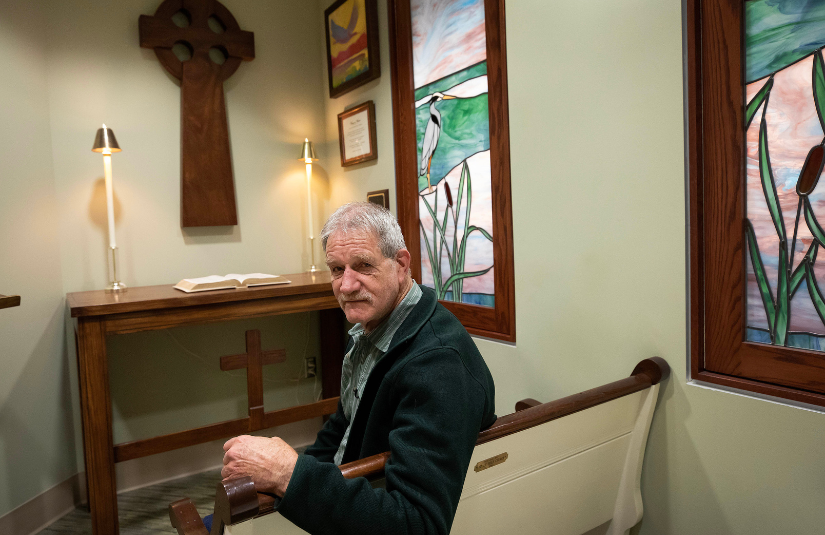Whenever Joseph “Joe” Bachner visits the chapel at Riverside Walter Reed Hospital, he feels close to his late parents: his father, Syl, a carpenter who built the chapel’s altar table and benches, and his mother, Dorothy, a former gift shop volunteer.
So Joe, a talented woodworker himself, decided to hand-carve a Celtic cross and donate it to RWRH’s chapel. He crafted the 4-foot-tall mahogany cross in the shop in his two-car garage, using some of his father’s old tools.
“I love that my work is right alongside my dad’s work,” he says. “This was a way to be really connected with him and honor both of my parents. Often when I pick up my father’s old chisel or plane, it seems like we’re working together – and never more than this time.”
For hospital leaders, the cross is a blessing. “It is so truly special, and a treasure to be enjoyed for many years to come,” says Shelly Johnson, RWRH’s President. “We are very grateful to have community members and families so vested in our success and ability to provide comfort and care to our patients, visitors and team members.”
Joe Bachner, 70, grew up in Pittsburgh, Pa., as one of seven children in a large and hardworking Christian family. His father was a carpenter and his grandfather a patternmaker for J&L Steel Company.
Joe’s parents moved to Gloucester in 1980, shortly after Syl’s retirement. Joe, meanwhile, lived in Florida and worked largely in real estate before relocating to Gloucester in 2005. Syl crafted the table and benches for RWRH’s chapel shortly before his death in 1994; Dorothy passed away in 2015.
Joe picked up woodworking as a hobby about 30 years ago, already armed with skills he’d learned from his dad. He started off with simple boxes, cabinets and later a decoy duck that was a popular Christmas gift for his sister.
“I just had a knack for it,” he recalls. “It was in my blood.”
In 1998, Joe decided to make Celtic crosses as family gifts after his mother returned from a trip to Ireland, where the design is common in churches as well as jewelry. The traditional Christian symbol features a cross accentuated with a circle around its vertical and horizontal lines; a Latin cross, or crucifix, doesn’t have that circle.
Joe’s early crosses were small – only 16 inches high – but he gradually made bigger pieces with more detailed inlays, sometimes using brass or bronze. Today, he sells wall and processional crosses in Celtic and Latin styles to churches and other organizations via an online site.
“Even when I’m out of my shop, I’m always thinking about how to solve the puzzle of how to make designs happen,” he relates. “I see each cross as a work of art, and nothing is going to leave my hands until I’m satisfied.”
The cross for RWRH took about two weeks to finish, and it was a labor of love. “I couldn’t have asked for better parents,” Joe says. “It gives me great joy that I could contribute something to a hospital and a community that they both loved.”
